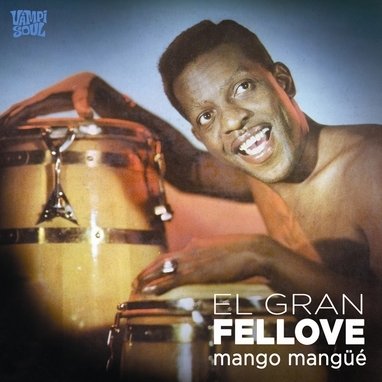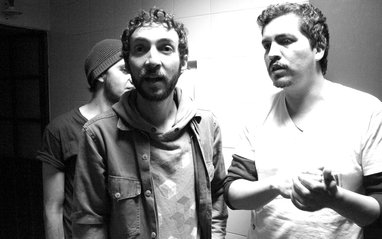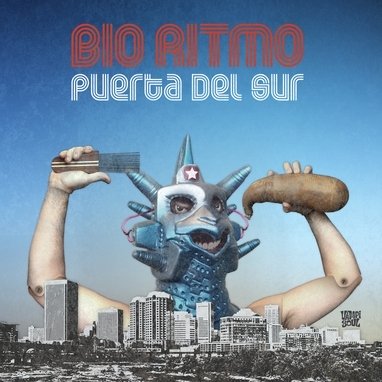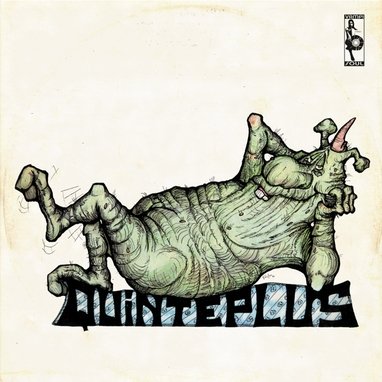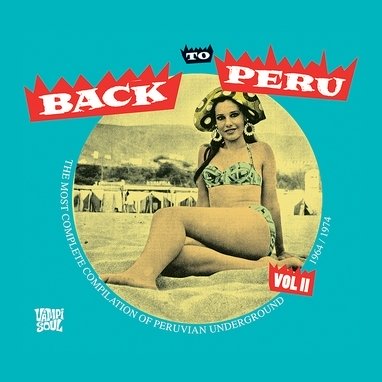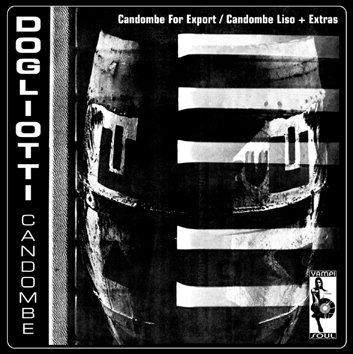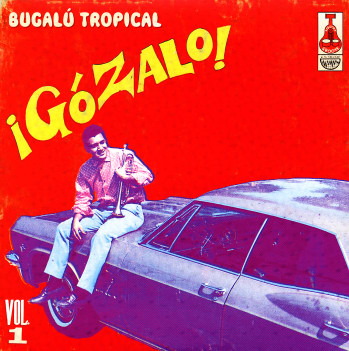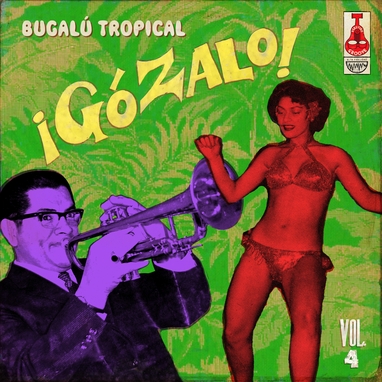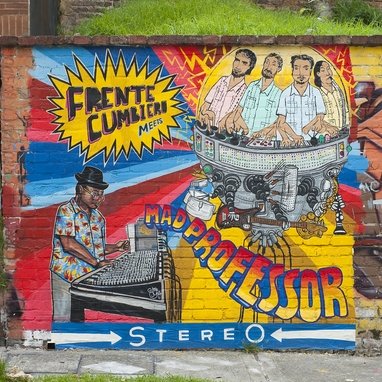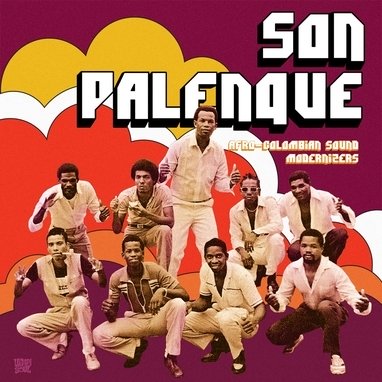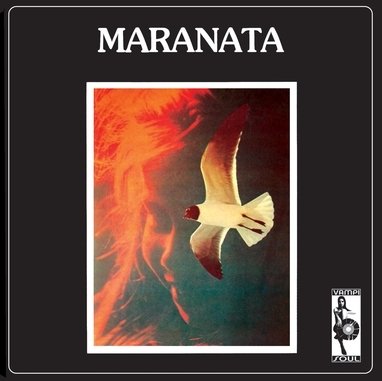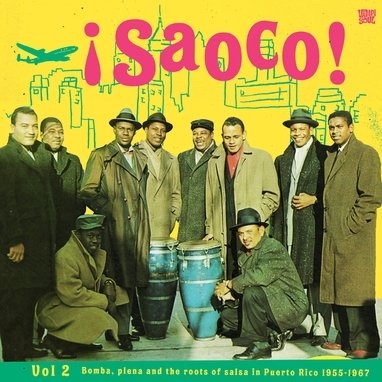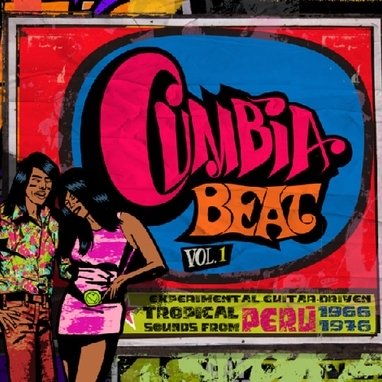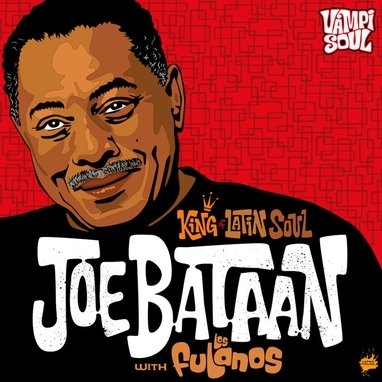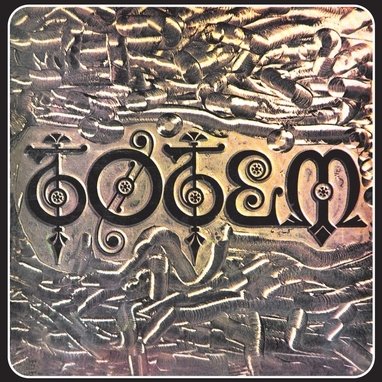El Gran Fellowe
Mango Mangüé
Vampisoul
El Gran Fellowe
Mango Mangüé
A key and original figure in Cuban music. Creator of his own style of scat, known as chua-chua. Liner notes with career overview by expert Luc Delannoy. 21 tracks that will have you shaking and grooving in a dancing frenzy.
Compilation of the late 50s and early 60s recordings by this unique singer and showman from Cuba, a contemporary of Pérez Prado, Cachao and Mongo Santamaría. Includes his famous ska/mambo crossover hit ‘El jamaiquino’. Francisco Fellove Valdés was born on October 7, 1923 in the Barrio Colón, Havana. When Fellove was a kid, he would walk through the streets of downtown Havana with a drum and scat. He met Chano Pozo and the young singer Armando Borcela “Guapacha” in his neighbourhood. “Also,” Fellove remembers, “I played the guitar and sang with the Niño Rivera.” That’s how he composed ‘Mango mangu?é’ when he was 16, in Niño Rivera’s house. The first musician to record the song was the singer Miguelito Valdés. Celia Cruz, Tito Puente, the flautist Johnny Pacheco and Aldemaro Romero also recorded it. “Then came ‘El jamaiquino’, another song I made with El Niño.” These two historic songs are included in this collection – recorded by Fellove himself in Mexico City. He was invited to many radio and TV programs like Show de Mediodía on CMQ with the Conjunto Casino, which featured Patato Valdés and Roberto Faz. He also sang on radio station Mil Diez and with the orchestra of the pianist Julio Gutiérrez on Channel 4 and on Cadena Azul. It’s probably less well known that Fellove was involved in the first weekend gatherings of singers and composers at Angelito Diaz’s house in the Callejón de Hamel and also at Celia Cruz’s house in the Buena Vista neighbourhood during the week. This is the beginning of a movement that would be known as Feeling, with Niño Rivera, César Portillo de la Luz, Olga Guillot, Omara Portuondo, Elena Burke, Aida Diestro, José Antonio Méndez… In 1952, Fellove participated in the first great jam session recorded in Havana for the Panart label: “Cuban Jam Sessions”. On December 1955, Fellove travelled to Mexico City. He made his debut at Roberto Morales’s Bar Latino with José Antonio Méndez before going to the El Burro club with the Orquesta América. He recorded a few 45s and six LPs for RCA Victor. The artistic director of RCA was the pianist and songwriter Mario Ruiz Armengol, who did a few arrangements for Fellove and lent him his orchestra for the recording sessions. So, beginning with his Havana scat, in which he expressed Cuba’s musical soul, the chua-chua was born in Mexico City. Along with Hector Batamba he organized a sextet with Lalo Montaner on the flute, Raúl Cerda on the piano, Hector Leal on the gu?iro, “El Lobo” on the drums and “El Ratón” on bass. After recording for RCA Victor (from September 1956 to September 1957) the group broke up when Batamba went to Europe. Fellove formed a new band: “I had invented the chua-chua, a kind of scat. In my group, Lobo and Melón did the choruses.” In this compilation we discover Fellove’s guarachera facet along with the best examples of his career in chuachua, but also some very original versions of the classics of Mexican music (‘Te quiero corazón’, ‘Baile el minuet’) and of Puerto Rican music (‘Cortaron a Elena’). Even more surprising is his interpretation of a Río de la Plata classic, ‘Los ejes de mi carreta’.
Productos relacionados
A key and original figure in Cuban music. Creator of his own style of scat, known as chua-chua. Liner notes with career overview by expert Luc Delannoy. 21 tracks that will have you shaking and grooving in a dancing frenzy.
Compilation of the late 50s and early 60s recordings by this unique singer and showman from Cuba, a contemporary of Pérez Prado, Cachao and Mongo Santamaría. Includes his famous ska/mambo crossover hit ‘El jamaiquino’. Francisco Fellove Valdés was born on October 7, 1923 in the Barrio Colón, Havana. When Fellove was a kid, he would walk through the streets of downtown Havana with a drum and scat. He met Chano Pozo and the young singer Armando Borcela “Guapacha” in his neighbourhood. “Also,” Fellove remembers, “I played the guitar and sang with the Niño Rivera.” That’s how he composed ‘Mango mangu?é’ when he was 16, in Niño Rivera’s house. The first musician to record the song was the singer Miguelito Valdés. Celia Cruz, Tito Puente, the flautist Johnny Pacheco and Aldemaro Romero also recorded it. “Then came ‘El jamaiquino’, another song I made with El Niño.” These two historic songs are included in this collection – recorded by Fellove himself in Mexico City. He was invited to many radio and TV programs like Show de Mediodía on CMQ with the Conjunto Casino, which featured Patato Valdés and Roberto Faz. He also sang on radio station Mil Diez and with the orchestra of the pianist Julio Gutiérrez on Channel 4 and on Cadena Azul. It’s probably less well known that Fellove was involved in the first weekend gatherings of singers and composers at Angelito Diaz’s house in the Callejón de Hamel and also at Celia Cruz’s house in the Buena Vista neighbourhood during the week. This is the beginning of a movement that would be known as Feeling, with Niño Rivera, César Portillo de la Luz, Olga Guillot, Omara Portuondo, Elena Burke, Aida Diestro, José Antonio Méndez… In 1952, Fellove participated in the first great jam session recorded in Havana for the Panart label: “Cuban Jam Sessions”. On December 1955, Fellove travelled to Mexico City. He made his debut at Roberto Morales’s Bar Latino with José Antonio Méndez before going to the El Burro club with the Orquesta América. He recorded a few 45s and six LPs for RCA Victor. The artistic director of RCA was the pianist and songwriter Mario Ruiz Armengol, who did a few arrangements for Fellove and lent him his orchestra for the recording sessions. So, beginning with his Havana scat, in which he expressed Cuba’s musical soul, the chua-chua was born in Mexico City. Along with Hector Batamba he organized a sextet with Lalo Montaner on the flute, Raúl Cerda on the piano, Hector Leal on the gu?iro, “El Lobo” on the drums and “El Ratón” on bass. After recording for RCA Victor (from September 1956 to September 1957) the group broke up when Batamba went to Europe. Fellove formed a new band: “I had invented the chua-chua, a kind of scat. In my group, Lobo and Melón did the choruses.” In this compilation we discover Fellove’s guarachera facet along with the best examples of his career in chuachua, but also some very original versions of the classics of Mexican music (‘Te quiero corazón’, ‘Baile el minuet’) and of Puerto Rican music (‘Cortaron a Elena’). Even more surprising is his interpretation of a Río de la Plata classic, ‘Los ejes de mi carreta’.
Productos relacionados
Mango Mangüé
A key and original figure in Cuban music. Creator of his own style of scat, known as chua-chua. Liner notes with career overview by expert Luc Delannoy. 21 tracks that will have you shaking and grooving in a dancing frenzy.
Compilation of the late 50s and early 60s recordings by this unique singer and showman from Cuba, a contemporary of Pérez Prado, Cachao and Mongo Santamaría. Includes his famous ska/mambo crossover hit ‘El jamaiquino’. Francisco Fellove Valdés was born on October 7, 1923 in the Barrio Colón, Havana. When Fellove was a kid, he would walk through the streets of downtown Havana with a drum and scat. He met Chano Pozo and the young singer Armando Borcela “Guapacha” in his neighbourhood. “Also,” Fellove remembers, “I played the guitar and sang with the Niño Rivera.” That’s how he composed ‘Mango mangu?é’ when he was 16, in Niño Rivera’s house. The first musician to record the song was the singer Miguelito Valdés. Celia Cruz, Tito Puente, the flautist Johnny Pacheco and Aldemaro Romero also recorded it. “Then came ‘El jamaiquino’, another song I made with El Niño.” These two historic songs are included in this collection – recorded by Fellove himself in Mexico City. He was invited to many radio and TV programs like Show de Mediodía on CMQ with the Conjunto Casino, which featured Patato Valdés and Roberto Faz. He also sang on radio station Mil Diez and with the orchestra of the pianist Julio Gutiérrez on Channel 4 and on Cadena Azul. It’s probably less well known that Fellove was involved in the first weekend gatherings of singers and composers at Angelito Diaz’s house in the Callejón de Hamel and also at Celia Cruz’s house in the Buena Vista neighbourhood during the week. This is the beginning of a movement that would be known as Feeling, with Niño Rivera, César Portillo de la Luz, Olga Guillot, Omara Portuondo, Elena Burke, Aida Diestro, José Antonio Méndez… In 1952, Fellove participated in the first great jam session recorded in Havana for the Panart label: “Cuban Jam Sessions”. On December 1955, Fellove travelled to Mexico City. He made his debut at Roberto Morales’s Bar Latino with José Antonio Méndez before going to the El Burro club with the Orquesta América. He recorded a few 45s and six LPs for RCA Victor. The artistic director of RCA was the pianist and songwriter Mario Ruiz Armengol, who did a few arrangements for Fellove and lent him his orchestra for the recording sessions. So, beginning with his Havana scat, in which he expressed Cuba’s musical soul, the chua-chua was born in Mexico City. Along with Hector Batamba he organized a sextet with Lalo Montaner on the flute, Raúl Cerda on the piano, Hector Leal on the gu?iro, “El Lobo” on the drums and “El Ratón” on bass. After recording for RCA Victor (from September 1956 to September 1957) the group broke up when Batamba went to Europe. Fellove formed a new band: “I had invented the chua-chua, a kind of scat. In my group, Lobo and Melón did the choruses.” In this compilation we discover Fellove’s guarachera facet along with the best examples of his career in chuachua, but also some very original versions of the classics of Mexican music (‘Te quiero corazón’, ‘Baile el minuet’) and of Puerto Rican music (‘Cortaron a Elena’). Even more surprising is his interpretation of a Río de la Plata classic, ‘Los ejes de mi carreta’.
A key and original figure in Cuban music. Creator of his own style of scat, known as chua-chua. Liner notes with career overview by expert Luc Delannoy. 21 tracks that will have you shaking and grooving in a dancing frenzy.
Compilation of the late 50s and early 60s recordings by this unique singer and showman from Cuba, a contemporary of Pérez Prado, Cachao and Mongo Santamaría. Includes his famous ska/mambo crossover hit ‘El jamaiquino’. Francisco Fellove Valdés was born on October 7, 1923 in the Barrio Colón, Havana. When Fellove was a kid, he would walk through the streets of downtown Havana with a drum and scat. He met Chano Pozo and the young singer Armando Borcela “Guapacha” in his neighbourhood. “Also,” Fellove remembers, “I played the guitar and sang with the Niño Rivera.” That’s how he composed ‘Mango mangu?é’ when he was 16, in Niño Rivera’s house. The first musician to record the song was the singer Miguelito Valdés. Celia Cruz, Tito Puente, the flautist Johnny Pacheco and Aldemaro Romero also recorded it. “Then came ‘El jamaiquino’, another song I made with El Niño.” These two historic songs are included in this collection – recorded by Fellove himself in Mexico City. He was invited to many radio and TV programs like Show de Mediodía on CMQ with the Conjunto Casino, which featured Patato Valdés and Roberto Faz. He also sang on radio station Mil Diez and with the orchestra of the pianist Julio Gutiérrez on Channel 4 and on Cadena Azul. It’s probably less well known that Fellove was involved in the first weekend gatherings of singers and composers at Angelito Diaz’s house in the Callejón de Hamel and also at Celia Cruz’s house in the Buena Vista neighbourhood during the week. This is the beginning of a movement that would be known as Feeling, with Niño Rivera, César Portillo de la Luz, Olga Guillot, Omara Portuondo, Elena Burke, Aida Diestro, José Antonio Méndez… In 1952, Fellove participated in the first great jam session recorded in Havana for the Panart label: “Cuban Jam Sessions”. On December 1955, Fellove travelled to Mexico City. He made his debut at Roberto Morales’s Bar Latino with José Antonio Méndez before going to the El Burro club with the Orquesta América. He recorded a few 45s and six LPs for RCA Victor. The artistic director of RCA was the pianist and songwriter Mario Ruiz Armengol, who did a few arrangements for Fellove and lent him his orchestra for the recording sessions. So, beginning with his Havana scat, in which he expressed Cuba’s musical soul, the chua-chua was born in Mexico City. Along with Hector Batamba he organized a sextet with Lalo Montaner on the flute, Raúl Cerda on the piano, Hector Leal on the gu?iro, “El Lobo” on the drums and “El Ratón” on bass. After recording for RCA Victor (from September 1956 to September 1957) the group broke up when Batamba went to Europe. Fellove formed a new band: “I had invented the chua-chua, a kind of scat. In my group, Lobo and Melón did the choruses.” In this compilation we discover Fellove’s guarachera facet along with the best examples of his career in chuachua, but also some very original versions of the classics of Mexican music (‘Te quiero corazón’, ‘Baile el minuet’) and of Puerto Rican music (‘Cortaron a Elena’). Even more surprising is his interpretation of a Río de la Plata classic, ‘Los ejes de mi carreta’.

